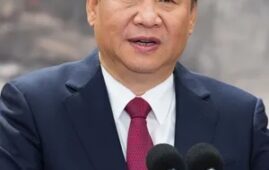



The Spring Festival is an important period that gauges China’s economic vitality.
During the past 7-day Chinese Lunar New Year holiday, huge high-quality and upgraded consumption demand was released in the country, leading to thriving businesses of online shopping, house call services and short trips, as more and more residents tended to avoid physical contacts and aggregations, and turned to reserved and staggered leisure activities.
“I didn’t go out this Spring Festival, and instead I did some fitness practices at home. It felt good,” said Li Bin, a teacher with a college in Beijing’s Haidian District. In order to keep an hour of fitness practices each day, he specifically bought a treadmill, dumbbells and a yoga mat.
The sales of household goods witnessed robust growth during the Spring Festival, and the consumption of jewelries, cosmetics and flowers also surged during this period that coincided with the Valentine’s Day.
During the 7-day holiday, the sales of jewelries, garments, communication devices and home appliances of enterprises monitored by China’s Ministry of Commerce (MOFCOM) grew 160.8 percent, 107.1 percent, 39.0 percent and 29.9 percent year on year, respectively. The sales of fitness equipment on some e-commerce platforms surged 49 percent.
According to relevant departments, the number of people visiting shopping centers more than doubled in 10 first- and second-tier Chinese cities, reaching 86 percent of that in the same period two years ago.
Cai Xiang, who works for a construction enterprise in Changsha, central China’s Hunan Province used to bring home stuffs he bought every Spring Festival. However, it was never easy to carry big-size luggage on the road. This year, everything he bought for his parents was ordered online and shipped to his hometown in western Hunan, which he said was much more convenient.
China’s online shopping and express industries maintained operation during this year’s Spring Festival, which enabled people staying put and their families back in their hometowns to send each other new year gifts. An online Chinese New Year shopping festival was organized by the MOFCOM and local authorities, and the sales exceeded 120 billion yuan ($18.5 billion) in the first 6 days of the holiday.
As the application of 5G and 4K goes wider, more and more Chinese are spending the Spring Festival “on the cloud.” Yunnan, Guangdong, Hubei, Heilongjiang, Xinjiang and Tibet launched various online activities and issued online and offline coupons to benefit the residents. Besides, Beijing, Shenzhen and Suzhou gave out tens of millions yuan of digital red packets.
“It was safe and interesting to spend the holiday in a B&B,” said Tang Wei, a citizen from Shijingshan District, Beijing, who booked a B&B in the capital’s Shunyi District where he and his family had a taste of local Chinese New Year’s Eve dinner and visited surrounding scenic spots.
The “stay-put” Spring Festival also led to a rise in short trips. The number of visits in parks, tourist attractions, museums, theaters, and ski resorts across the country significantly climbed. There was also a boom in the reservation of hotels and B&Bs in city outskirts. Statistics indicate that the accommodation consumption in the Beijing’s suburban districts of Yanqing, Miyun and Huairou more than tripled during the Spring Festival, and that in Shanghai’s Chongming, Qingpu and Jiading also surged more than 200 percent.
Multiple Chinese films came out during the holiday and ignited theaters. During the Spring Festival, the box office of Chinese films exceeded 7 billion yuan, creating a historical high. The total box office crossed the 10-billion-yuan mark in just in the first one and a half months this year, close to half of the whole-year figure in 2020.


Cooperation between China and Nigeria had.



Nigerian government has urged trainees of.



Minister of State for Foreign Affairs,.


The Nigerian Government has congratulated the.


The Humanitarian Service Diamond Awards has.
A Chinese Company, Inner Galaxy Steel.


The Programme Coordinator, Regulatory, Compliance and.


A Non-Governmental Organization (NGO), Committee for.
The Trustfund Pensions Limited has chided.


The House of Representatives Committee on.
Leave a Comment